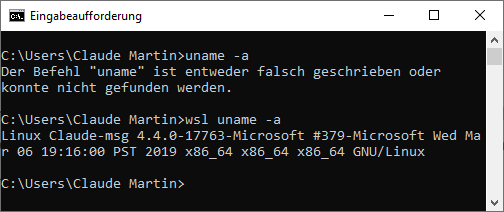Java code to easily rotate a buffered image.
Continue reading “Rotate BufferedImage in Java”Rotate BufferedImage in Java
Simple method that correctly rotates a BufferedImage.
Computer Programming for Humanoids
Simple method that correctly rotates a BufferedImage.
Java code to easily rotate a buffered image.
Continue reading “Rotate BufferedImage in Java”I’ve once made a simple helper class for a set of bytes stored as an integer bitfield. So the idea is that each of the 32bits is used to represent if the ordinal number is in the set or not. This only works for the bytes 0 to 31.
Now this is an “inline class” – something we will get with Project Valhalla.
Here’s the branch of my project:
https://github.com/claudemartin/smallset/tree/valhalla
For this to work you need a JDK with a preview of Project Valhalla. Check java.net for that: http://jdk.java.net/valhalla/
Just download that JDK, clone my branch, build using Ant, and see what you can do with it. It’s actually a good example of an inline class, because it is just an integer (primitive) value but has methods (like a referenced type would). It doesn’t need object identity, but should still behave like an object. For example the sets are comparable. The type actually implements the Comparable interface.
Note that this might not work with newer JDKs. I used JDK 14 + valhalla from java.net and the feature might look quite different in newer releases of Java.
I just saw that I never posted this here on my blog. JDBC is still a good way to just connect to some SQL database where JPA would be overkill. So I wrote a library that allows you to use the Java Stream API to process that data.
https://github.com/claudemartin/streamed-sql
Connection conn = dbpool.getConnection();
var strsql = StreamedSQL.create(conn, true);
try (Stream<Foo> stream = strsql.stream("SELECT * FROM FOO", Foo::new)) {
stream.filter(f -> f.getName().startsWith("L")).sorted().forEachOrdered(System.out::println);
}
With Windows Subsystem for Linux (WSL) we can now use Linux tools, such as grep, rsync, ssh, and network commands, such as dig and netstat, on Windows directly. No need for cygwin or other 3rd party software.
Here’s an example on how uname is unknown to Windows, but WSL (Ubuntu in my case) knows it:

Many misconceptions in Java and similar languages stem from the bad default behaviour. I’ll explain some of them.
Continue reading “Bad Defaults in Java”Java isn’t easy. It’s often more complex than needed. But being easy for beginners shouldn’t be a design goal with high priority.
Should a programming language be easy?
I don’t know why so many educational establishments use Java to teach programming. They often start with Java in the first semester. Even the Oracle tutorials expect the reader to already know some basics. Java was designed for programmers who already know C/C++ as seen in this example.
Continue reading “Is Java easy?”The
mainmethod is similar to themainfunction in C and C++; it’s the entry point for your application and will subsequently invoke all the other methods required by your program. [Lesson: A Closer Look at the “Hello World!” Application]
Was 1900 a leap year and does every minute have 60 seconds?
In Java we have a new API for Date and Time since Java SE 8. Before that, there was already an API with mutable dates and fore some reason there was a date just for SQL.
Many were not happy with the old API. There was Joda-Time, which later became the basis for JSR-310 and is now found in the package “java.time”.
Stalin-Sort using divide and conquer.
I just love this idea:

But when you have an input such as [42,1,2,3,4,5,6] you just get
[42] instead of [1,2,3,4,5,6]. You can get a better result if you use divide and conquer. And that is something Stalin would do, don’t you think? So I implemented a recursive solution in Java. It tries all possible results, which is not a single pass and therefore defeats the purpose of having a fast O(n) algorithm. And my implementation isn’t even in-place. A new data structure has to be created. That’s why I also added an implementation using a linked list, which is what Mathew describes.
The code is on pastebin: https://pastebin.com/rEmvZSiA
Java (both the language and the JVM) are not aware of constants. To reduce confusion it’s better to not use the term “constant” in Java code, unless it’s actually a universal constant. Continue reading “Java knows no Constants”